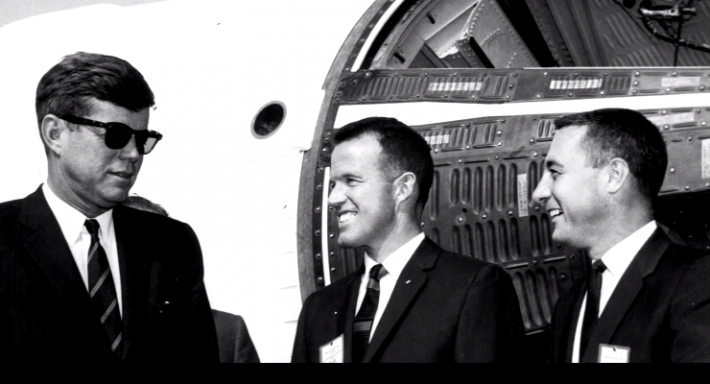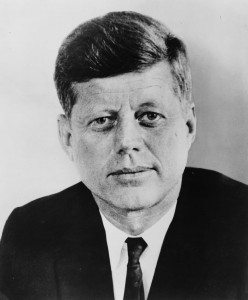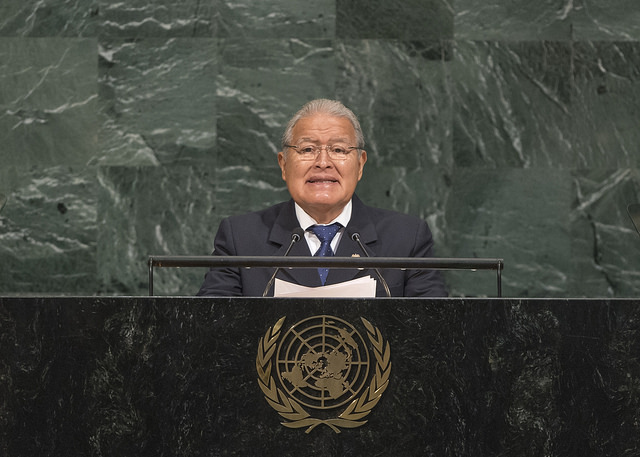It is difficult to gain a visceral sense of the immensity of energy involved in an asteroid or comet impact on Earth. Although asteroids and comets can range anywhere from meters to many kilometers in diameter[ref]All sizes of comets or asteroids will be given in the length of the diameter of the object, unless otherwise noted. E.g., a “1 km asteroid” refers to an asteroid with a diameter of 1 km across.[/ref] (imagine Mt. Everest falling from the sky!), the actual effect of an impact is greatly enhanced by the enormous speeds involved. The total kinetic energy released in such a collision is the product of the mass of the impactor multiplied by the square of the velocity, and the impact speeds range from 10 to 70 km/second, or 20,000 to 150,000 miles per hour![ref]For comparison, a typical passenger jet travels at around 500-600 mph (~250 m/s); the speed of sound (at sea-level) is about 770 mph (343 m/s); and the fastest jet ever flown (unmanned) was NASA’s X-43A scramjet, which reached mach 9.8, which is 7,500 mph or 3.1 km/s.[/ref]
For example, take two notable cases: 1) the impact of an extremely large object, ~10 km, creating the 180 km diameter Chicxulub crater in the Yucatán Peninsula in Mexico, formed around 65 million years ago, which may have helped put an end to the dinosaurs; and 2) the Tunguska event in Siberia, Russia, in 1908, which, though believed to have been caused by a much smaller object, only about 30-50 meters across, resulted in local devastation. These two significant cases will help provide a sense of a range of possible scenarios.
Based on studies of Mexico’s Chicxulub crater, it has been estimated that a roughly 10 km object, hurtling at around 20 km/s (~45,000 mph), slammed into the Earth ~65 million years ago. Though the exact details of the effects are left to models and simulations, we can certainly get an idea of the scale of destruction: mega-tsunamis[ref]Megatsunami is a term used to describe a tsunami that has wave heights which are much larger than normal tsunamis. They originate from a large scale landslide or collision event, rather than from tectonic activity. A recent example is the 1958 Lituya Bay megatsunami, near Alaska, which resulted in a wave hundreds of meters high, the largest known in modern times.[/ref] thousands of meters high; an expanding cloud of boiling dust, vapor, and ash; rock and other surface material ejected out of the atmosphere, raining back down over a huge area, redhot from its atmospheric re-entry; and shock waves that trigger volcanic eruptions and earthquakes around the entire globe.
To give a rough sense of scale, the energy released by such an impact is estimated to be in the range of 100 million megatons of TNT, 20,000 times larger than public estimations of the entire global thermonuclear weapons stockpile (see table I). In addition, besides the immediate effects of collision, an impact this large would launch so much dust and debris into the atmosphere that a dust cloud would cover the entire planet, blocking out the Sun for years: the impact winter, only one of many possible long-term, global effects.
Fortunately, the Chicxulub case represents an extreme, and relatively rare threat. Such large impacts, though more destructive, are much less frequent than smaller impacts. As will be expanded shortly, our neighborhood in the Solar System is populated with many asteroids and comets; however, the frequency of impact by these objects, generally, is inversely proportional to their size. Nevertheless, while a big object, in the range of 1 km or larger, can create massive global damage, even a relatively small object, can cause significant damage.
One often-cited example of an impact thought to be caused by a smaller object is the Tunguska event, in which a sudden explosion leveled roughly 80 million trees over an area of 2,150 square kilometers in Siberia, Russia. Though some mystery and debate still surrounds this 1908 case, the most well-supported theory is that the blast was due to a comet or asteroid exploding as it impacted the atmosphere, disintegrating before it could hit the Earth’s surface, and generating a massive blast wave.[ref]Though the Tunguska event drew and has continued to draw intense interest and study, no unambiguous, single impact crater has been found. For example, there is some evidence that it could have been generated by a massive release and explosion of natural gas from underneath the Siberian crust. In any case, we investigate the asteroid-impact theory in this report.[/ref]
Setting aside any lingering debates on the subject, studies have been conducted to determine what size asteroid or comet could have flattened 80 million trees over a region the size of a major metropolitan area. The results of these studies have shown that an object only 30-50 meters across could have generated such a blast wave.[ref]See, Comet/Asteroid Impacts and Human Society: An Interdisciplinary Approach, Peter T. Bobrowsky, Hans Rickman, Springer, Feb 21, 2007 – 546 pages.[/ref]
In order to put the range of threats further into perspective, this table presents a comparison of the levels of energy released from various types of events, both manmade and natural.
Structure and Composition
It is also highly important that we determine the physical composition of the interplanetary bodies. Some of the deeper implications of this will be discussed in the sections on defense options and exploratory missions, but here we must note that not all of these objects are structurally similar. Some are almost solid iron-nickel, some solid rock, while many others are loose piles of smaller objects held together by their gravity (sometimes referred to as flying rubble piles).
The Objects
The next question is, where do these objects come from? Our solar neighborhood is much more populated than you may realize. Here, we concentrate only on two specific classes of objects: near-Earth objects and long-period comets. The classical image of our Solar System, four inner planets, then the asteroid belt, followed by four outer planets, while true, does not present the full picture. As Johannes Kepler indicated, and as Karl Gauss proved, there is a major discontinuity between Mars and Jupiter separating the inner from outer planets, which is the home of the majority of the asteroids in our Solar System. However, in addition to this “main belt” of asteroids, there are other populations of asteroids and comets. Some share Jupiter’s orbit. Some dwell in between Saturn and Uranus. Many populate the area of the inner planets, including around Earth.
The most successful way to further investigations of the ordering of the entire Solar System will be an elaboration of the methodological approach of Kepler and Gauss, the great minds who discovered the ordering of the Solar System. Instead of starting from pairwise interactions, we must investigate the Solar System as a single, harmonic system, taking a top-down view of the orbital systems and subsystems. Ultimately, applying those methodological considerations will be the key to improving our understanding of the orbits, and determining well into the future what bodies may threaten our planet.
Consider, first, a class of objects known as near-Earth objects (NEOs). This class of potentially threatening objects are mostly asteroids, but include some short-period comets.[ref]The comets included in the near-Earth objects grouping (sometimes referred to as short-period comets) have dramatically different orbits than the long-period comets mentioned above. Some of these short-period comets can have orbits that are similar to that of asteroids, and constitute a small part of the total near-Earth object population.[/ref]
The defining character of NEOs is that they orbit the Sun in paths that are either in the same general region as the Earth’s orbit, or can even cross the Earth’s orbit on a regular basis, raising the possibility of a collision with the Earth at some point in the future.
Though not all NEOs pose a threat to the Earth, a large number could. Of these, a number have orbits which come within 0.05 AU of the Earth’s orbit, and are large enough to cause damage to the Earth. These are referred to as potentially hazardous objects (PHOs).[ref]AU stands for astronomical unit, the average distance from the Earth to the Sun. It is used as a standard measure of distance in the Solar System. Also don’t be fooled by the image above, as bodies in the Solar System orbit within a thin volume, not a flat plane. Two orbits that may look like they intersect, when drawn on paper, may not, because one could be above the other.[/ref] This particular class of objects are of great concern for government agencies and scientific organizations all over the world, who have set out to find and track them, in order to identify potential threats, and to give advanced warning time to prepare defensive actions if needed.
Before going into the current estimations of the NEO population, how to observe and track them, as well as defense options, we must first identify a second class of potentially threatening objects, long period comets (LPCs). The orbits of these comets are completely different from those of NEOs. Whereas NEOs spend their entire life in the inner Solar System, long period comets spend the vast majority of their lifetime out in the farthest depths of the Solar System (often well beyond the orbit of Pluto.) The extreme ellipticity of some of these distant creatures can take them on rapid trips through the interior of the Solar System, and possibly across Earth’s orbit.
These create a number of significant problems for defending the Earth. First, the key to planetary defense is early detection. While we have had success in detecting NEOs which populate the inner region of the Solar System, it is basically impossible, with present technology, to see the vast majority of these long period comets when they are farther away. Not only does this dramatically shorten warning times, but, since the majority of these comets take hundreds of thousands of years to complete a single orbit around the Sun (some even take millions of years), we know little to nothing about the nature of the long period comet population. In addition, from what we do know, they are often very large, and can have impact speeds of up to about 70 kilometers per second (over 150,000 mph), significantly greater than asteroids.[ref]Remember that the energy released on impact goes up with the square of the speed. To give one example, the 70 km/second impact speed of a comet, going three and a half times faster than the 20 km/second impact speed of an asteroid of the same size, would deliver over 12 times more energy.[/ref]
Currently, compared to NEOs, we see far fewer long period comets passing our region of the Solar System, so it is expected that their impacts with the Earth are much less frequent. However, they have hit the Earth in the past, and if one were on a future impact trajectory, its great speed, large mass, and undetectability until close to the Earth would make it a particularly dangerous global threat. These are the type of bodies that could eliminate all human civilization with one impact.
There is also reason to believe that the population of long period comets which pass into the interior of the Solar System is not completely random. The current hypothesis is that these long period comets may originate from an extremely distant spherical structure surrounding the Sun, at the farthest reaches of the Solar System, known as the Oort cloud. Presently we do not have the observational capability to see comets that far away (a 10 km object at 10,000 times the distance of the Earth from the Sun is hard to spot), but it is thought that the number of large comets (larger than 1 km) in the Oort cloud is in the range of trillions.
Since they extend so far beyond the Solar System, these comets become sensitive to galactic factors. Other stars coming close to our Solar System can perturb the Oort cloud, changing the orbits of potentially millions of comets. Beside individual influences, at these distances, the gravitational effect of the Sun is less dominant and the general gravitational field of the galaxy begins to have an influence—an effect which varies as the galaxy evolves, and as our Solar System travels through it.
Even though our current scope of understanding regards these galactic processes as having slow, long-term effects, they are the type of considerations that mankind must begin to take into account at this stage. First and foremost, there is still little in the way of solid knowledge about these outer regions of the Solar System, and much less known about our Solar System’s relationship with our galaxy and how those galactic changes affect us here on Earth. There are many theories and models, but as we are reminded by the fact that recent readings from the two 35-year old Voyager spacecraft continue to surprise the scientific community, we cannot assume that we understand these neighboring regions, or the solar-galactic interactions, until we go out and investigate.
If there is some doubt as to why mankind has an imperative to understand our solar and galactic environment, let long period comets draw for us a larger neighborhood.
While our current capability to defend against the threat of long-period comets is limited, the state of our knowledge of near-Earth objects is less uncertain.
Population and Impact Frequency Estimations
Due to their close orbits, near-Earth objects can be observed and tracked with Earth-based and space-based telescopes. Following on a few decades of observation programs, astronomers have developed a significant catalogue of known near-Earth objects. Depending on how well and for how long each individual NEO is observed, computer models can be used to extrapolate each NEO’s orbit and trajectory, years or decades into the future.[ref]Obviously, the more observations of an object we have, and the better those observations are, the better the forecast will be. Still there are certain subtle effects which require greater investigation, such as composition, spin rates, and non-gravitational effects, such as an uneven heating/emission action referred to as the Yarkovsky effect. Moreover, there are questions about the methodology of the computer models themselves: they generally rely on only a few dozen large bodies to model the field through which the others pass.[/ref] These multi-decade extrapolations are crucial, since the key to defense against a potentially threatening asteroid is having as much advanced warning time as possible.
Presently, we are far from having discovered and tracked every NEO, and that must be done. The limited population that has been characterized by current surveys has been used to extrapolate statistical estimations of the expected total NEO populations. For example, in September 2011, a NASA-led team published updated estimations of NEO populations based on the data obtained from the Wide-field Infrared Survey Explorer (WISE) space telescope.
Since then, various estimates continue to be refined as increasing amounts of data from Earth-based telescopic surveys are received. One of the more recent available estimates was released in April of 2012, and presented by the head of NASA’s NEO program, Lindley Johnson, at a May 2012 Workshop on Potentially Hazardous Asteroids.[ref]http://neo.jpl.nasa.gov/neo/2011_AG5_LN_intro_wksp.pdf ; April 17, 2012, Alan B. Chamberin (JPL).[/ref]
As is clear in table 2, we have been rather successful in identifying most of the larger NEOs. Of the discovered populations, some fit the specific category of potentially hazardous objects, meaning that their orbits come close to or even directly cross the Earth’s orbit. Currently, 152 of the discovered 850 near-Earth asteroids larger than 1 km are classified as PHOs, although none are expected to collide with Earth over the coming century. This is important, since 1 km is a rough division line between objects which would create truly global effects if they struck the Earth, and objects whose impact would produce a local or regional effect.
Still, this leaves the vast majority of medium and small-sized objects undiscovered: ~80% (over 21,000) of the middle-sized NEOs, ranging from 100 to 1000 meters; and ~99.5% of smaller NEOs, 30-100 meters (recall that the Tunguska-sized event is associated with objects in the range of 30-50 meters).
Any of these undiscovered objects could already be on a short-term collision course with Earth, unbeknownst to us. Some are guaranteed to be, at some point in the future. We are still essentially flying blind through our populated region of the inner Solar System.
Further analysis has provided estimations of the frequency with which various sized NEOs and comets impact the Earth.[ref]For example see, Catastrophic Events Caused by Cosmic Objects; 2008, Springer; Chapter 2, “Size-frequency distribution of asteroids and impact craters: estimates of impact rate.”[/ref] As implied by the NEO population estimates referenced above, and as indicated in the graph on the preceding page, there is a direct relationship between the size of the NEO, the population level, and the impact rate.
These estimations of NEO populations and impact frequencies are still approximations, and should only be taken as temporary reference points, paving the way for more rigorous investigations. We cannot entrust human lives, or potentially human civilization, to betting on statistics which purely extrapolate from past events. They can be utilized in limited applications where useful, but only on the path to obtaining a principled—causal—understanding of the system. This requires both a dramatic expansion of our observational systems and our space-faring capability generally, as well as renewed methodological approaches to understanding the organization of the Solar System, and its relationship with the galaxy. Reliance on statistical extrapolations from the past leaves mankind completely blind to unexpected shifts away from present trends, driven by the development and evolution of the Solar System and galaxy—a process driven by future changes.



















